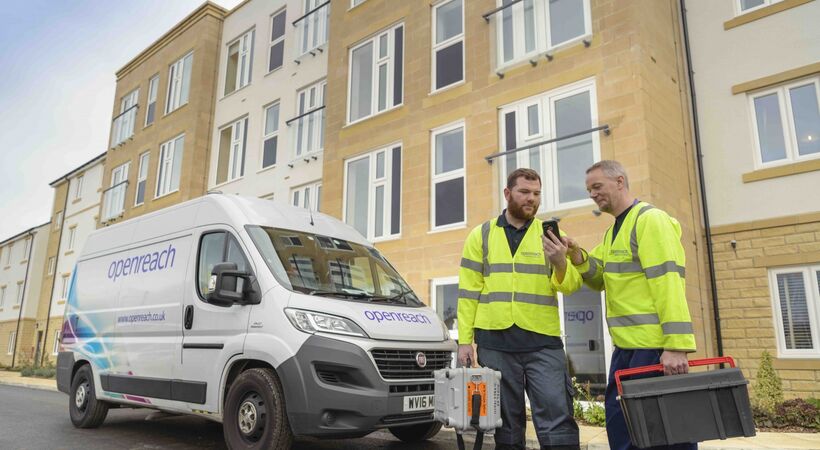Most people in the UK spend up to 22 hours of their day indoors. From working in an office to catching up on the latest TV show, we are constantly interacting with our built environment. However, making these spaces more comfortable, cheaper to run and better for the environment is on the cusp of a revolution: one that the UK can lead if we act quickly on building a faster, more reliable, full fibre broadband network.
The Internet of Things (IoT) is driving the development of smart buildings. From Wi-Fi powered security devices, to voice activated devices that allow you to control every aspect of your home, our buildings are becoming more efficient and adapted to our needs.
Superfast Fibre-to-the-Cabinet (FTTC) supports a lot of the smarter home technology we see at the moment. Openreach have led on this technology, making it available to over 27 million homes and business around the nation. In total, 95% of homes and businesses can get access to Superfast fibre broadband, with Openreach delivering the vast majority of this infrastructure. This network meets most people’s needs for the foreseeable future, but with consumers using 40% more data each year, it can only be a stopgap in the long-term. Especially if we are to fully realise the benefits of smarter, more connected buildings.
With the Internet of Things, we're entering a period where ubiquitous connectivity is the norm rather than the exception for both homes and businesses, with predictions of more than 20 billion connected devices by 2020. Full fibre ensures a reliable connection to support this complex web of devices – whether for checking on an ageing parent through a telehealth app or using smart sensors to control office heating and lighting.
Only future-proof broadband infrastructure such as full fibre can meet the requirements in the long term. Full fibre broadband enables speeds of up to 1Gbps – enough bandwidth for a family of four to all stream ultra HD or 4k quality movies or TV simultaneously. But unlike traditional copper lines which are prone to faults, signal interference and things like water damage, ‘full fibre’ cabling – where fibre optic cables go all the way from an exchange to people’s front doors - is much more reliable and resilient, and doesn’t need to be replaced every few years.
This is the largest upgrade to our digital infrastructure in a generation, and no company is investing more or aiming higher than Openreach to meet this challenge. In just one year, Openreach has more than doubled its full fibre footprint to 1.5m premises. We have done this by investing in our workforce, recruiting 3,500 new engineers last year, and hiring a further 3,000 this year, which has enabled us to build at a massive rate. Every 30 seconds we pass a home or business with our new future-proofed full fibre network.
We have also led on broadband infrastructure innovation, in an aim to minimise disruption and costs. Technology such as Ground Penetrating Radars (GPR) reduces costs and disruption by precisely mapping where to dig new cables. This technology has been instrumental in the roll-out of full fibre in difficult builds such as the historic town of Salisbury. While we aim to reach 4 million premises by March 2021 and would like to go even further, we are being slowed down by a number of barriers.
One of the key drivers to increasing this build is installing full fibre in new builds and refurbishments of existing premises. We work with over 19,000 developers to install full fibre, and currently offer to build full fibre to the premises (FTTP) for free in developments of over 30 premises, doing a cost-share basis for sites with 2-29 premises. However, tens of thousands of new homes and businesses – especially in small developments – are still being built without full fibre connectivity. Further, we need to make sure full fibre is installed when offices or big blocks of flats are refurbished, and an increased demand for smarter buildings will only help to drive demand.
Full fibre is key in unlocking the smart potential of buildings. We want to full fibre the whole nation by 2025, but to do this we need the support of people working on smarter buildings and cities to make this a reality.



